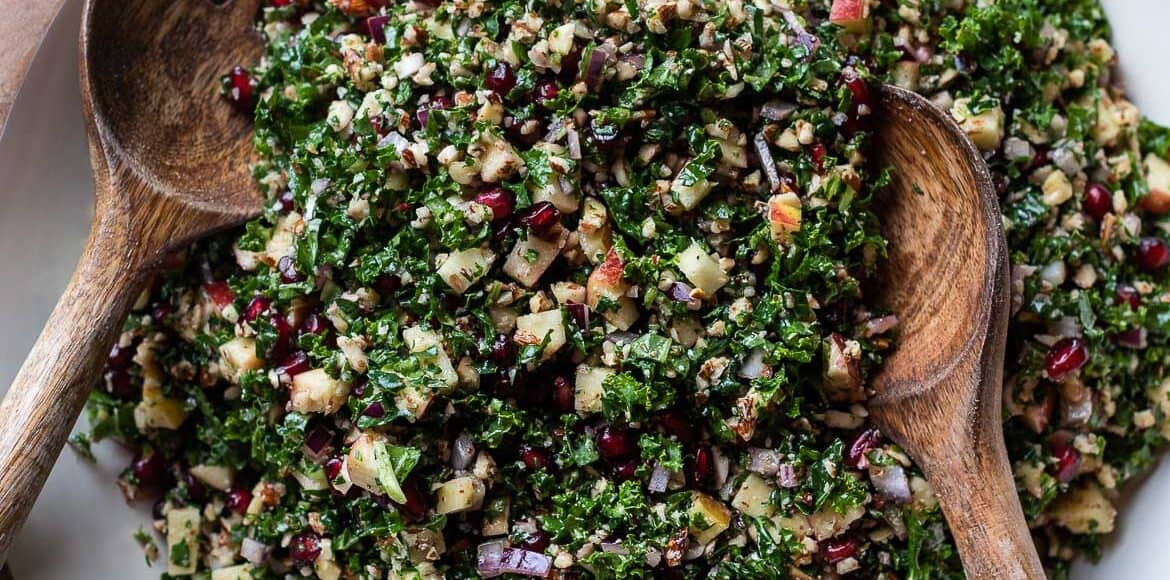
Kale Tabbouleh with Apples, Almonds, and Pomegranate
Kale Tabbouleh – This hearty salad takes inspiration from a classic tabbouleh, replacing the bulgur with finely chopped almonds. This recipe comes from The Apricot Lane Farms Cookbook by Molly Chester and is a delicious salad or side dish for autumn, winter, and the holidays!
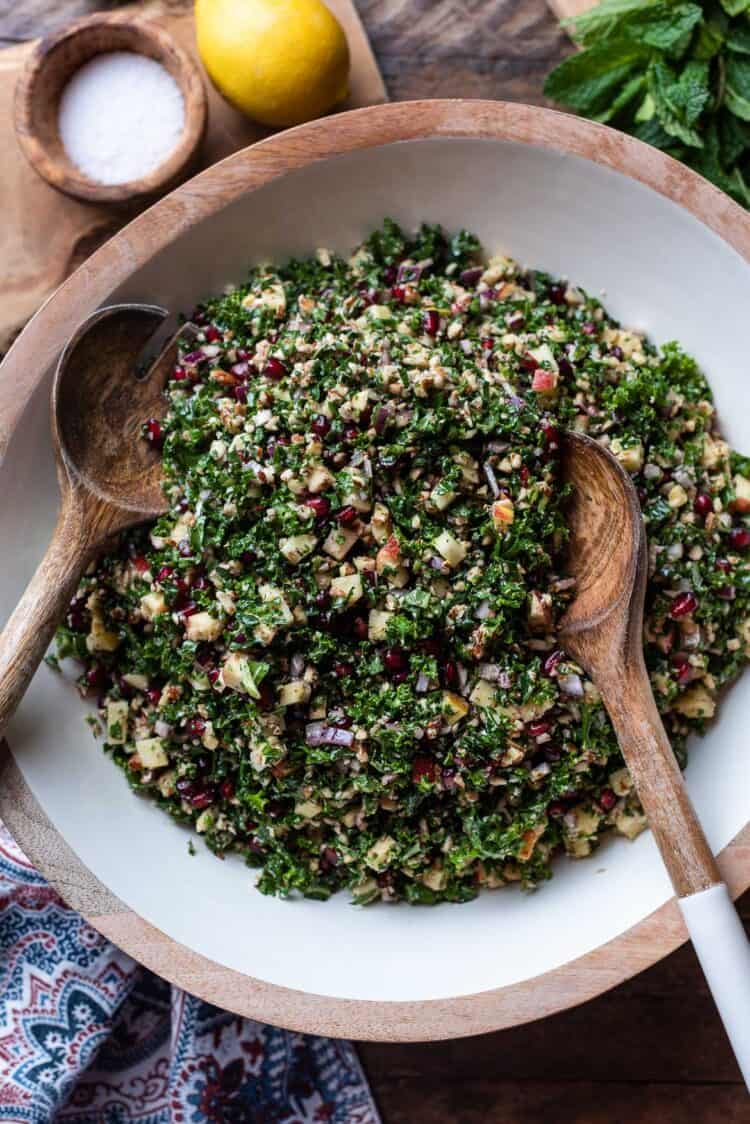
Kale Tabbouleh with Apples, Almonds, and Pomegranate – This hearty salad takes inspiration from a classic tabbouleh, replacing the bulgur with finely chopped almonds. A delicious salad or side dish for autumn, winter, and the holidays, it comes from The Apricot Lane Farms Cookbook by Molly Chester.
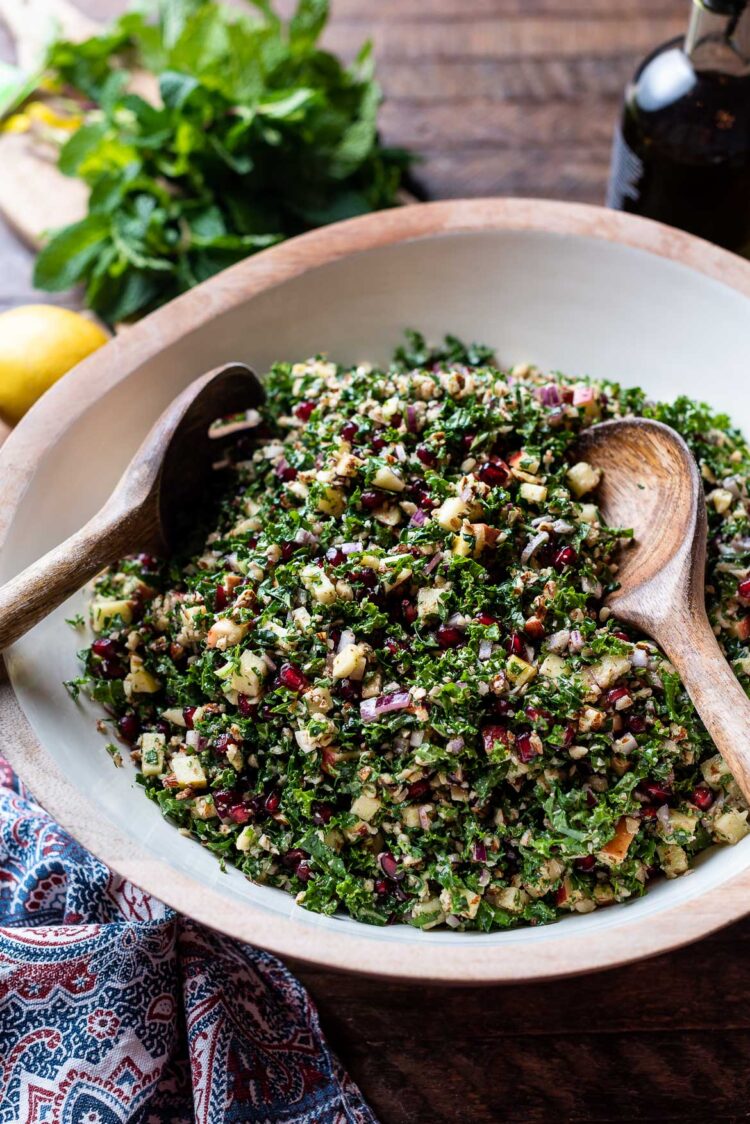
With all the indulgence of the holiday season, I seek balance. Between the cookies and heavy meals, sometimes it’s easy to forget to eat healthy. And sometimes, your body truly craves something healthy and fresh. A simple, hearty salad is often the answer. Bonus points if it pairs beautifully with many of the holiday dishes on the table.
I was happy to welcome Molly Chester to the podcast to discuss her newly released cookbook. The Apricot Lane Farms Cookbook: Recipes and Stories from The Biggest Little Farm (affiliate link) shares the bounty of the L.A. farm they have lovingly rehabilitated, and recipes from the dedicated farms who work its land.
Molly’s recipe for Kale Tabbouleh caught my eye. Hearty kale, almonds, crisp apples, and jeweled pomegranate aerils tossed in a simple dressing is simply the perfect salad for this time of year.
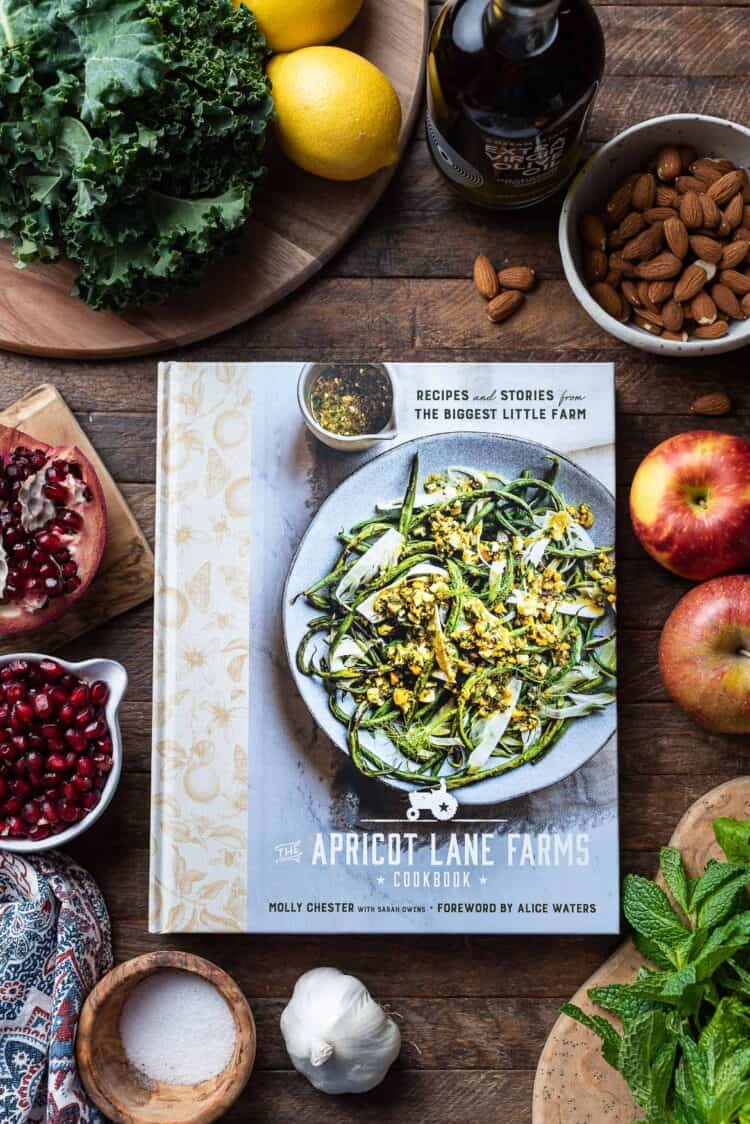
How to Make Kale Tabbouleh
In this recipe, ground almonds replaces bulgur in the traditional tabbouleh, giving a lightly nutty flavor and hearty texture. Molly recommends almonds that have been soaked and dried or dehydrated to enhance its flavor, but I have also tried this with regular roasted, unsalted almonds, and it is fine.
The key to this recipe is chopping the ingredients finely for a consistent size and texture. You can use a food processor to coarse-grind your almonds, but chopping with a knife also works.
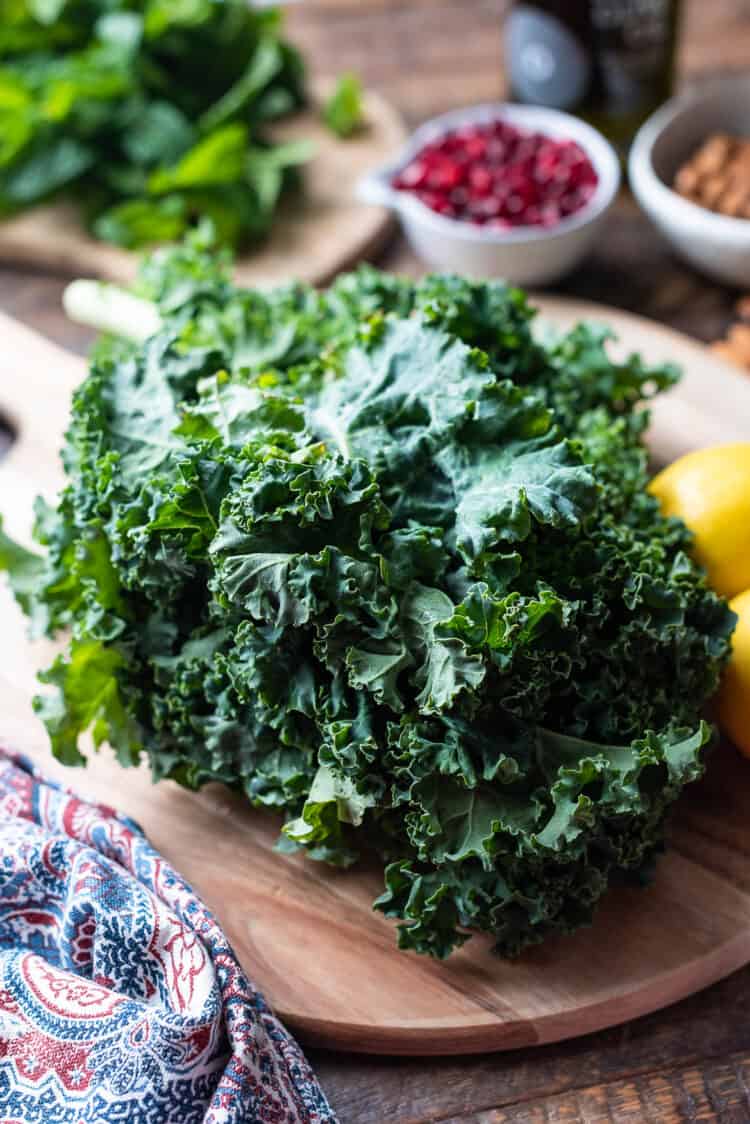
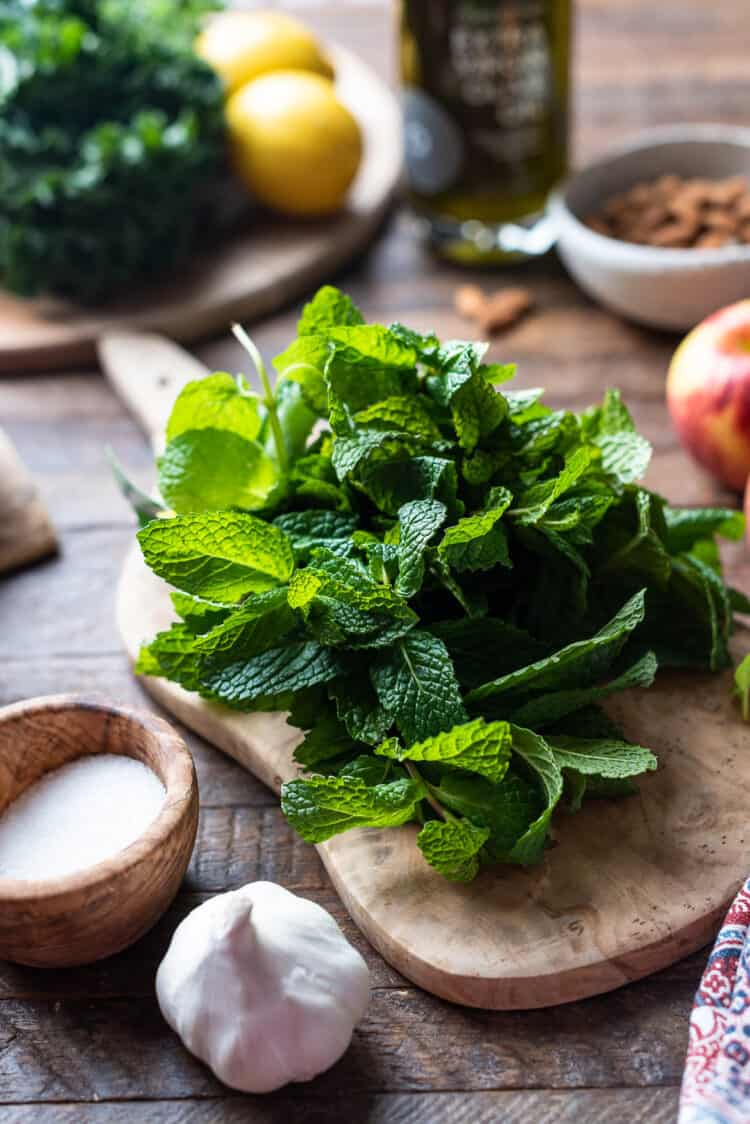
To make this tabbouleh, simply combine all the ingredients in a non-reactive bowl! It couldn’t be simpler!
If you wish to make the dressing separately and in advance, you can do so, and it will keep for up to a week.
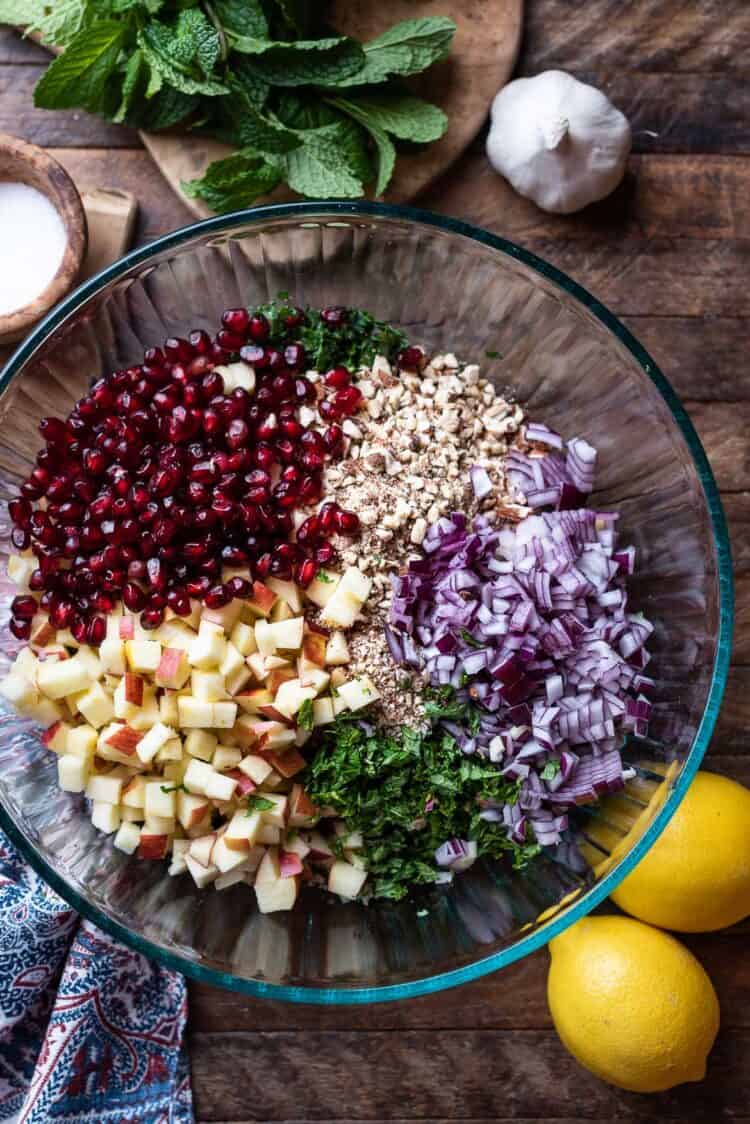
With most kale salads, I find that it benefits from a little chilling time in the refrigerator after tossing with the dressing. This helps helps tenderize the leaves, and I do believe the almonds benefit from this, too.

Listen to the Podcast with Molly Chester
For more farm-to-table recipes, check out my interview with Molly Chester in Episode 61 of the Kitchen Confidante Podcast!
More Kale Salad Recipes
Roasted Butternut Squash Winter Salad with Kale, Farro and Cranberry Dressing
Kale Persimmon Salad
Mandarin Orange Kale Salad
Cranberry Walnut Kale Salad with Fresh Cranberry Vinaigrette
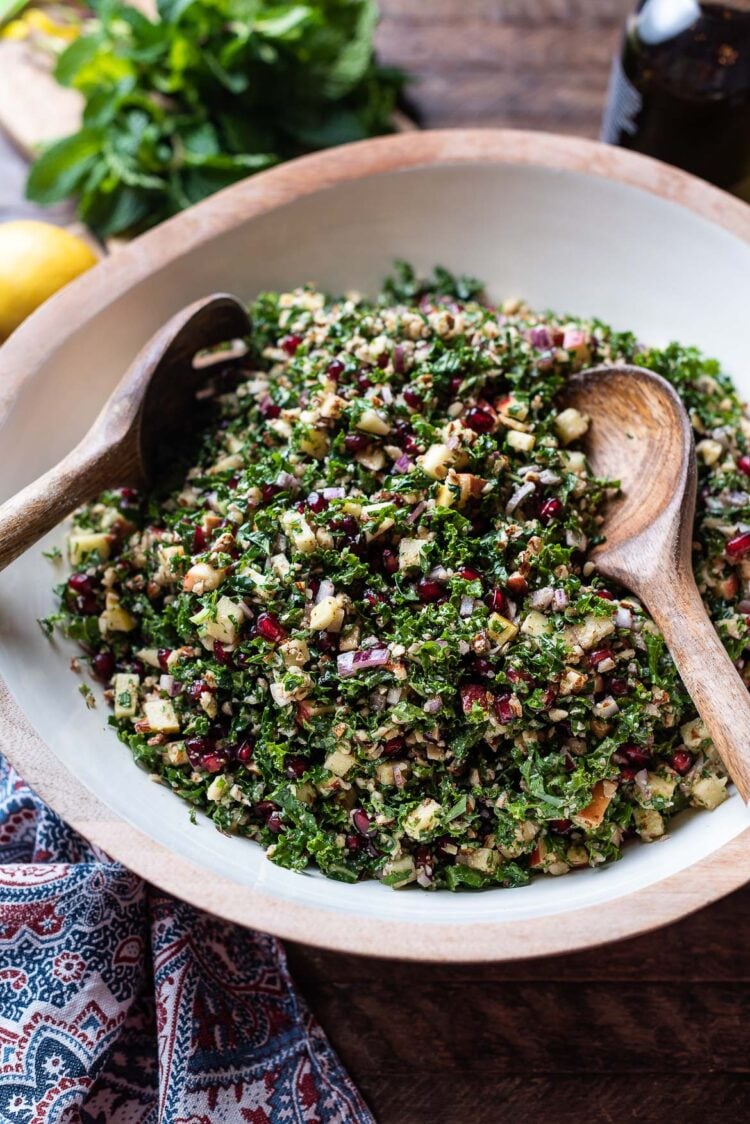
Disclosure: I was sent a copy of The Apricot Lane Farms Cookbook to review for the Kitchen Confidante Podcast Episode 61 with Molly Chester. All opinions are, of course, my own. The post may have affiliate links; see my Disclosure page to learn more.
Kale Tabbouleh with Apples, Almonds, and Pomegranate
Ingredients
- 6 cups loosely packed, finely chopped kale stems removed (2 large bunches)
- 2 cups medium-coarse-ground almonds
- 2 cups unpeeled small-diced apple (2 large apples)
- 1/2 cup finely minced red onion (about 1/2 large onion)
- 1 cup fresh pomegranate seeds (about 1 pomegranate)
- 1/2 cup finely chopped fresh mint leaves
- 6-8 tablespoons fresh lemon juice (1 1/2 to 2 large lemons)
- 1/4 cup cold-pressed extra-virgin olive oil
- 1 teaspoon minced garlic (1 clove)
- 2 teaspoons fine sea salt
- 1 teaspoon ground sumac
Instructions
- In a large, nonreactive bowl, combine the kale, almonds, apple, onion, pomegranate, mint, lemon juice, oil, garlic, salt, and sumac. Toss to mix and serve immediately.
- Store in a covered nonreactive container for up to 2 days. Alternatively, combine the lemon juice, oil, garlic, salt and sumac and store separately form the salad for up to 1 week before mixing and serving.
Notes
- This tabbouleh-inspired combination uses almond as its base instead of the burhhul (bulgur) that is traditionally used. For best results pulse the almonds in a food processor to the size of a medium-textured couscous.
- To balance the acidity of lemon and sumac (both essential to this dish), choose crisp and firm sweet apples such as Gordon or Pink Lady and a sweet pomegranate variety such as Parfianka, or decrease the amount of lemon juice to taste.
- The red, green, and white colors of this salad are festive for holiday meals, and the salad can be made several hours in advance, covered, and placed in the refrigerator.
- Although we use dinosaur or curly-leafed kale, any tender-grown variety will perform well.
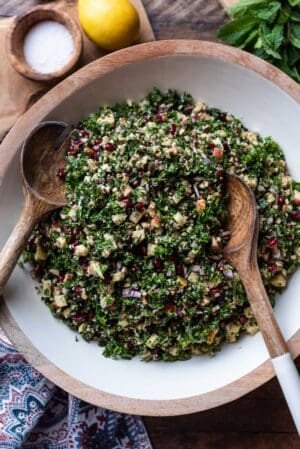





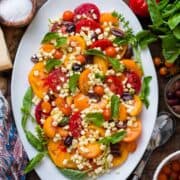


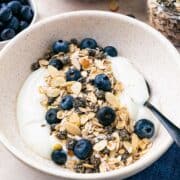
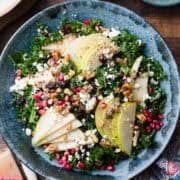







Comments